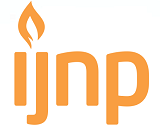The Effect of Gargling with Peppermint Water on Thirsty in CKD (Chronic Kidney Disease) Undergoing Hemodialysis At Harapan dan Doa Hospital 2023
DOI:
https://doi.org/10.18196/ijnp.v8i1.21150Keywords:
gargling, hemodialysis, kidney failure, peppermint, thirstAbstract
Background: Chronic kidney disease is a condition in which the body is unable to maintain balance in metabolism, fluids, and electrolytes due to irreparable damage to kidney function. One of the problems that can occur in hemodialysis patients is thirst. Therefore, it is important to treat thirst. Gargling with peppermint water is one way to quench thirst and overcome it.
Objective: The purpose of this study was to find out whether gargling with peppermint water is effective in reducing thirst in kidney failure patients undergoing hemodialysis at Harapan dan Doa Hospital Bengkulu.
Method: This study used quasi-experimental methods. The population in this study is 65 patients suffering from chronic kidney failure and undergoing hemodialysis at Harapan dan Doa Hospital in Bengkulu City. The total sample of this study amounted to 36 people who followed the treatment in Harapan dan Doa Hospital Bengkulu, which were divided into two groups, namely the intervention group of 18 people and the control group of 18 people. A purposive sampling technique was used in this study. In addition, visual analog scale instruments for assessing thirst were used as questionnaires to assess thirst.
Result: The study showed that there was a difference in average thirst sensation between the intervention groups and the control group. For the Mann-Whitney statistical test for thirst, the p-value was 0.026 (p-value ≤ α 0.05). This suggested that gargling with peppermint water affected thirst in hemodialysis patients.
Conclusion: Hence peppermint water gargle therapy may be recommended as a non-drug treatment to control taste thirst in renal failure patients undergoing hemodialysis.References
Aisara, S., Azmi, S., & Yanni, M. (2018). Gambaran klinis penderita penyakit ginjal kronik yang menjalani hemodialisis di RSUP Dr. M. Djamil Padang. Jurnal Kesehatan Andalas, 7(1), 42-50. https://doi.org/10.25077/jka.v7i1.778
Anggraini, D., Sukrama, I. D. M., & Pertiwi, N. K. F. R. (2018). Jus Apel Manalagi (Malus Sylvestris Mill) menghambat pertumbuhan Streptococcus mutans in vitro. Bali Dental Journal, 2(1), 59–64. https://doi.org/10.51559/bdj.v2i1.28
Anita, C., D. & Novitasari, D. (2017). Kepatuhan Pembatasan Asupan Cairan Terhadap Lama Menjalani Hemodialisa. Jurnal Kesehatan Masyarakat 1 (1): 104–12.
Ardiyanti. (2015). Pengaruh Kumur Dengan Obat Kumur Rasa Mint Terhadap Rasa Haus Pada Pasien Penyakit Ginjal Kronik Yang Menjalani Hemodialis Di SMC RS Telogorejo Anis. Ekp, 13(3), 1576–1580.
Armiyati, Y., Khoiriyah, K., & Mustofa, A. (2019). Optimization of Thirst Management on CKD Patients Undergoing Hemodialysis by Sipping Ice Cube. Media Keperawatan Indonesia, 2(1), 38. https://doi.org/10.26714/mki.2.1.2019.38-48
Arfany, N., W. (2014). Megulum Es Batu Terhadap Penurunan Rasa Haus Pada Pasien Penyakit Ginjal Kronis Yang Menjalani Hemodialisa. 1–9.
Bikbov, B., Purcell, C. A., Levey, A. S., Smith, M., Abdoli, A., Abebe, M., et al. (2020). Global, regional, and national burden of chronic kidney disease, 1990–2017: a systematic analysis for the Global Burden of Disease Study 2017. The Lancet, 395(10225), 709–733. https://doi.org/10.1016/S0140-6736(20)30045-3.
CDC. (2021). 322964-A Chronic Kidney Disease in the United States, 2021. https://www.cdc.gov/kidneydisease/publications-resources/CKD-national-facts.html.
Daryani, Hamranani, S. S. T., & Sri Sarwanti, M. (2021). Pengaruh Pemberian Slimber Ice Terhadap Penurunan IDWG (Inter Dialitic Weigh Gain) Pasien Cronic Kidney Diseases (CKD). MOTORIK Jurnal Ilmu Kesehatan, 15(2), 84–89. https://doi.org/10.61902/motorik.v15i2.180
Dasuki, D., & Basok, B. (2019). Pengaruh Menghisap Slimber Ice Terhadap Intensitas Rasa Haus Pasien Gagal Ginjal Kronik Yang Menjalani Hemodialisa. Indonesian Journal for Health Sciences, 2(2), 77. https://doi.org/10.24269/ijhs.v2i2.1492
Guerrero-Hue, M., Rayego-Mateos, S., Vázquez-Carballo, C., Palomino-Antolín, A., García-Caballero, C., Opazo-Rios, L., Morgado-Pascual, J. L., Herencia, C., Mas, S., Ortiz, A., Rubio-Navarro, A., Egea, J., Villalba, J. M., Egido, J., & Moreno, J. A. (2021). Protective role of nrf2 in renal disease. Antioxidants, 10(1), 1–31. https://doi.org/10.3390/antiox10010039
Inayati, A., Hasanah, U., & Maryuni, S. (2021). Dukungan Keluarga Dengan Kualitas Hidup Pasien Gagal Ginjal Kronik Yang Menjalani Hemodialisa Di Rsud Ahmad Yani Metro. Jurnal Wacana Kesehatan, 5(2), 588. https://doi.org/10.52822/jwk.v5i2.153
Ria, N. (2018). Pengaruh Berkumur Air Rebusan Daun Kemangi Terhadap Ph Saliva Pada Siswa/I Sdn 060933 Simpang Pos Padang Bulan Medan Tahun 2017. Jurnal Ilmiah PANNMED (Pharmacist, Analyst, Nurse, Nutrition, Midwivery, Environment, Dentist), 12(2), 127–132. https://doi.org/10.36911/pannmed.v12i2.14
Sofidiana, L., L., Sulistyani, E., & Lestari, P. E. (2022). Daya Hambat Kombinasi Ekstrak Pegagan (Centella asiatica, L.) dan Peppermint terhadap Pertumbuhan Streptococcus mutans. E-Journal Pustaka Kesehatan, 10(3), 195–201.
Sutriyanti, Y., Almaini, A., & Utario, Y. (2022). Self Care Assistance Towards the Families in Improving the Quality of Life for Elderly With Disabilities. Proceeding B-ICON, 1(1), 396–402. https://doi.org/10.33088/bicon.v1i1.69
Miranville, A. 2020. Annual Report 2019. Vol. 5.
Fajri, A., N., Sulastri., & Kristini, P. (2020). Pengaruh Terapi Ice Cube’ S Sebagai Evidance Based Nursing Untuk Mengurangi Rasa Haus Pada Pasien. Prosiding Seminar Nasional Keperawatan Universitas Muhammadiyah Surakarta 1 (3): 11–15. GGK, Rasa Haus,%0ATerapi Ice Cube’s.
Ganong, W., F. (2008). Buku ajar fisiologikedokteran ed. 22. Jakarta: EGC.
Guyton. (2017). Guyton. Vol. 6.
Kemenkes RI. 2022. Profil Kesehatan Indonesia 2021.
Najikhah, U., & Warsono, W. (2020). Penurunan Rasa Haus Pada Pasien Chronic Kidney Disease (CKD) Dengan Berkumur Air Matang. Ners Muda, 1(2), 108. https://doi.org/10.26714/nm.v1i2.5655
Riskesdas Bengkulu. (2018). Laporan Provinsi Bengkulu RISKESDAS 2018. Kementrian Kesehatan Republik Indonesia, 123.
Sacrias, G. G., & E. L. Rathinasamy. (2015). Effect of Nursing Interventions on Thirst and Interdialytic Weight Gain of Patients with Chronic Kidney Disease Subjected to Hemodialysis. Brunei Darussalam Journal of Health 6(1):13–19.
Smeltzer, S., C. (2015). Keperawatan Medikal Bedah. Jakarta : EGC
Suryono, A., Armiyati, Y., & Mustofa, A. (2016). Efektifitas mengulum es batu dan berkumur air matang terhadap penurunan rasa haus pasien Penyakit Ginjal Kronik (PGK) di RSUP. Dr. Kariadi Semarang. http://jurma.unimus.ac.id/index.php/peraw at/article/view/290, (20 February 2019).
Wijayanti, W., Isro’in, L., & Purwanti, L. E. (2017). Analisis Perilaku Pasien Hemodialisis dalam Pengontrolan Cairan Tubuh. Indonesian Journal for Health Sciences, 1(1), 10. https://doi.org/10.24269/ijhs.v1i1.371
Downloads
Additional Files
Published
Issue
Section
License
License
Articles published in the IJNP (Indonesian Journal of Nursing Practices) are licensed under a Attribution 4.0 International (CC BY 4.0) license. You are free to:
- Share — copy and redistribute the material in any medium or format.
- Adapt — remix, transform, and build upon the material for any purpose, even commercially.
This license is acceptable for Free Cultural Works. The licensor cannot revoke these freedoms as long as you follow the license terms. Under the following terms:
Attribution — You must give appropriate credit, provide a link to the license, and indicate if changes were made. You may do so in any reasonable manner, but not in any way that suggests the licensor endorses you or your use.
- No additional restrictions — You may not apply legal terms or technological measures that legally restrict others from doing anything the license permits.
Copyright
Authors who publish with IJNP (Indonesian Journal of Nursing Practices) agree to the following terms:
- Authors retain copyright and grant IJNP (Indonesian Journal of Nursing Practices) the right of first publication with the work simultaneously licensed under an Attribution 4.0 International (CC BY 4.0) that allows others to remix, adapt and build upon the work with an acknowledgment of the work's authorship and of the initial publication in IJNP (Indonesian Journal of Nursing Practices).
- Authors are permitted to copy and redistribute the journal's published version of the work (e.g., post it to an institutional repository or publish it in a book), with an acknowledgment of its initial publication in IJNP (Indonesian Journal of Nursing Practices).














